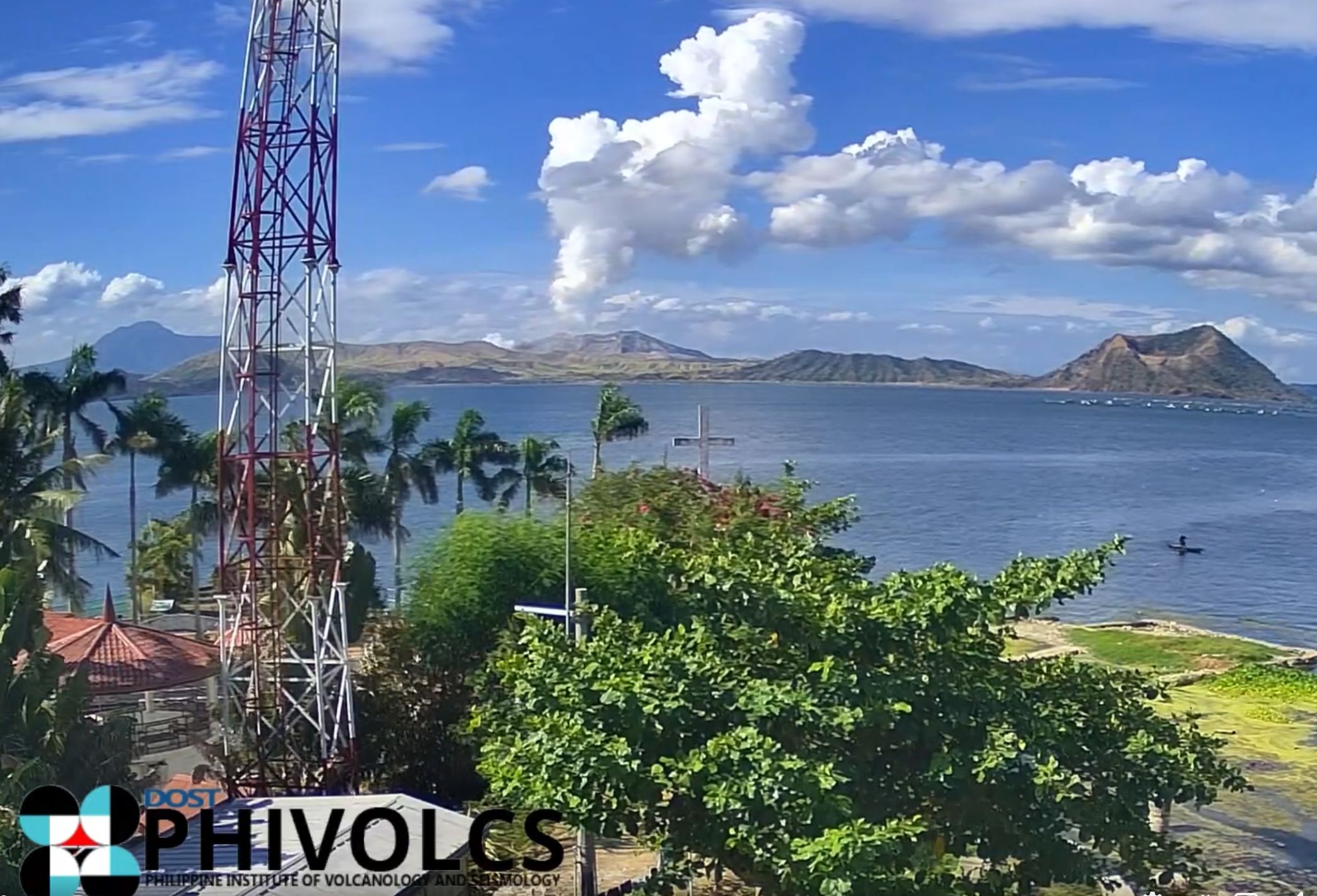
The Philippine Institute of Volcanology and Seismology (Phivolcs) said four minor and successive phreatic or steam-driven eruptions were observed at Taal Volcano on Friday morning, May 10.
Phivolcs said the phreatic eruption events at the Taal’s main crater were observed from 7:03 a.m. to 7:09 a.m., 7:17 a.m. to 7:18 a.m., 7:52 a.m. to 7:54 a.m., and 7:57 a.m. to 8 a.m.
Steam-laden plumes rose 100 to 300 meters above the main crater before drifting southwest, Phivolcs also said.
“Sulfur dioxide (SO2) emissions slightly increased yesterday, May 9, at 2,346 tons per day. Average SO2 emissions since January this year remain high at 8,766 tons per day,” it added.
Phivolcs attributed the "weak" phreatic activity to the continued emission of hot volcanic gases from Taal's main crater, warning that similar events could follow.
However, the background levels of volcanic earthquake activity and ground deformation detected at Taal suggest that unrest is unlikely to progress to magmatic eruption, it said.
Alert Level 1 maintained
Despite the recurring phreatic eruptions, Phivolcs said Taal Volcano is still under Alert Level 1.
It indicates that Taal Volcano is still in an abnormal state and should not be interpreted as having ceased unrest or the threat of eruptive activity.
Phivolcs added that sudden steam-driven or phreatic explosions, volcanic earthquakes, small amounts of ashfall, and potentially fatal buildups or releases of volcanic gas are all potential threats to Taal Volcano Island (TVI) at Alert Level 1.
It also warned the public that the degassing of high concentrations of volcanic SO2 may pose long-term health risks to communities around Taal Caldera, which are frequently exposed to volcanic gas.
Exercise precautions
Phivolcs reminded that entering TVI, Taal’s permanent danger zone, particularly near the main crater and the Daang Kastila fissure, is strictly prohibited.
“Local governments should continuously monitor and assess their communities’ preparedness, as well as implement appropriate response measures, to mitigate hazards posed by long-term degassing and related phreatic activity,” it said.
“Civil aviation authorities must advise pilots to avoid flying close to the volcano because airborne ash and ballistic fragments from sudden explosions, as well as wind-remobilized ash, can pose a threat to aircraft,” it added.
The last phreatic eruption at Taal Volcano occurred on May 8.